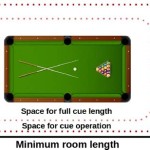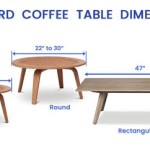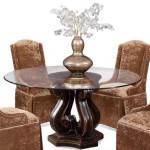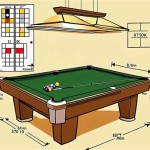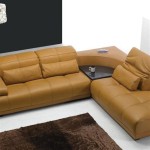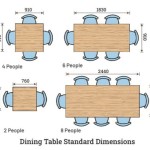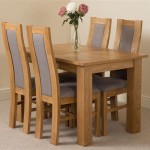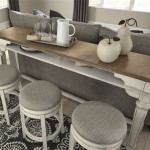Marble Top Nest of Tables: A Study in Style and Functionality
The marble top nest of tables represents a versatile and aesthetically pleasing addition to a variety of interior design schemes. These sets, typically comprising three tables of graduating size designed to nest within each other, offer a practical solution for space-saving while providing ample surface area when needed. The combination of the natural beauty of marble with the functional design of nested tables makes them a popular choice for homeowners seeking elegance and adaptability.
The composition of a marble top nest of tables is important to consider. The table tops, crafted from genuine marble, offer a distinctive visual appeal characterized by unique veining and color variations. The bases are commonly constructed from materials such as metal, wood, or a combination of both, providing structural support and complementing the marble’s aesthetic. The choice of base material can significantly influence the overall style, ranging from modern and minimalist with metal bases to classic and traditional with wooden bases.
The appeal of marble top nest of tables extends beyond mere aesthetics. Their inherent functionality allows for flexible use within a living space. When not in use, the tables can be neatly nested, minimizing their footprint. When required, they can be easily deployed to provide additional surface area for drinks, snacks, books, or decorative items. This adaptability makes them particularly suitable for smaller living rooms, apartments, or any space where maximizing available floor space is a priority.
The selection of a marble top nest of tables requires careful consideration of several factors, including the type of marble, the style of the base, the size of the tables, and the overall aesthetic of the room. A thorough understanding of these elements ensures that the chosen set seamlessly integrates into the existing décor and meets the specific needs of the user.
Types of Marble Used in Table Tops
The type of marble used in the construction of the table tops significantly impacts the appearance, durability, and cost of the nest of tables. Different varieties of marble exhibit unique characteristics in terms of color, veining, and porosity. Understanding these differences is crucial for making an informed purchasing decision.
Carrara marble, sourced from the Carrara region of Italy, is one of the most commonly used types. It is characterized by its white or blue-gray background with delicate, feathery gray veins. Carrara marble is known for its relatively low cost and consistent appearance, making it a popular choice for mass-produced furniture.
Calacatta marble, also originating from Italy, is a more premium option. It features a brighter white background with bold, dramatic veining in shades of gray, gold, or brown. Calacatta marble is considered more luxurious and is often used in high-end furniture and architectural applications. Its rarity and distinctive appearance contribute to its higher price point.
Emperador marble, typically sourced from Spain, is characterized by its rich brown background with contrasting light-colored veins. This type of marble offers a warm and sophisticated aesthetic and is often used in traditional or contemporary design schemes. Emperador marble can vary in shade from light to dark brown, providing a range of options to suit different preferences.
Verde Guatemala marble, as the name suggests, is a green marble with dark green and black veining. This unique marble offers a striking contrast to the more common white and gray varieties. Verde Guatemala marble is often used to add a touch of drama and sophistication to a space.
The selection of a particular marble type should be based on the desired aesthetic, budget, and intended use of the nest of tables. It is also important to consider the porosity of the marble and to ensure that it is properly sealed to protect against staining and damage.
Base Materials and Their Stylistic Implications
The material used for the base of a marble top nest of tables plays a significant role in defining its overall style and durability. The choice of base material should complement the marble top and integrate seamlessly into the existing décor. Common materials include metal, wood, and combinations of both.
Metal bases, often crafted from steel, iron, or brass, offer a sleek and modern aesthetic. Metal bases are typically finished with a powder coating or plating to enhance their durability and corrosion resistance. They can be designed in a variety of shapes, from simple geometric forms to more intricate and sculptural designs. Metal bases are well-suited for contemporary or minimalist interiors.
Wooden bases provide a warmer and more traditional aesthetic. Common wood species used for bases include oak, maple, walnut, and mahogany. The wood can be stained, painted, or left natural to highlight its grain and texture. Wooden bases can be crafted in a variety of styles, from simple and understated to ornate and decorative. They are well-suited for traditional, transitional, or rustic interiors.
Combinations of metal and wood offer a balanced approach, blending the sleekness of metal with the warmth of wood. These hybrid bases can create a visually interesting and versatile design that complements a wide range of interior styles. The proportions of metal and wood can be adjusted to achieve the desired aesthetic balance.
Beyond aesthetics, the base material also impacts the stability and durability of the nest of tables. Metal bases tend to be more durable and resistant to wear and tear, while wooden bases may require more care and maintenance to prevent damage from moisture or impacts. The choice of base material should be based on both stylistic preferences and practical considerations.
Practical Considerations for Choosing a Marble Top Nest of Tables
Selecting the right marble top nest of tables involves several practical considerations beyond aesthetics. Factors such as size, shape, height, and maintenance requirements should be carefully evaluated to ensure that the chosen set meets the specific needs of the user and the demands of the intended environment.
The size of the tables is a crucial consideration, particularly in smaller living spaces. The tables should be appropriately sized for the available space, allowing for comfortable use and easy movement around the room. It is important to measure the intended location and to consider the dimensions of the tallest and widest table in the set, as well as the footprint when the tables are nested together.
The shape of the table tops can also influence the functionality and aesthetic appeal of the nest of tables. Round table tops are often preferred for smaller spaces, as they allow for easier movement and prevent sharp corners. Square or rectangular table tops provide a more structured and formal look and may be better suited for larger rooms. The chosen shape should complement the overall style of the room and the existing furniture.
The height of the tables should be appropriate for their intended use. The tallest table should be at a comfortable height for placing drinks or snacks while seated, while the smaller tables can serve as side tables or decorative accents. Consider the height of the surrounding furniture, such as sofas and chairs, to ensure that the tables are proportionally correct.
Marble, while beautiful, is a porous material that can be susceptible to staining and damage if not properly maintained. It is essential to seal the marble top to protect it from spills and stains. Regular cleaning with a pH-neutral cleaner is also recommended to prevent the buildup of dirt and grime. Avoid using abrasive cleaners or harsh chemicals, as they can damage the surface of the marble.
The weight of the marble top should also be considered, especially if the tables will be frequently moved. Marble can be quite heavy, so it is important to choose a set with a sturdy base that can adequately support the weight. Consider adding felt pads to the bottom of the legs or base to protect floors from scratches and scuffs.
The overall stability of the nest of tables is another important factor. Ensure that the base is well-constructed and provides adequate support for the marble top. Check for any wobbling or instability before purchasing the set. A stable and durable set of tables will provide years of reliable service.
Finally, consider the overall budget for the nest of tables. Marble top furniture can range in price from relatively affordable to quite expensive, depending on the type of marble, the quality of the base, and the design complexity. Set a budget beforehand and stick to it, keeping in mind that investing in a higher-quality set may provide better long-term value.

Set Of 2 Round Nesting Tables Marble Top

Acme Furniture Zaidee 20 In White Marble Nesting End Table With Finished Lv02796 The Home

Delaney Round Marble Nesting Coffee Table

2pcs Fancy Marble Nesting Tables Square Nest Coffee Table Fashionable Furniture Ebay

Martin Svensson Home Twillinger 34 In White And Gray Round Genuine Marble Top Nesting Coffee Tables 3714211

Century Furniture Nest Cocktail Table Matte Brass Glass Large

Medora 3 Piece Marble Top Nesting Table Set White

2 Pieces Nest Coffee Table Marble Top With Stainless Steel Frame

Living Room Coffee Tables Set Of 3 Round Nesting With White Marble And Gold Metal Iron Base Nest

Medora 3 Piece Marble Top Nesting Table Set White

